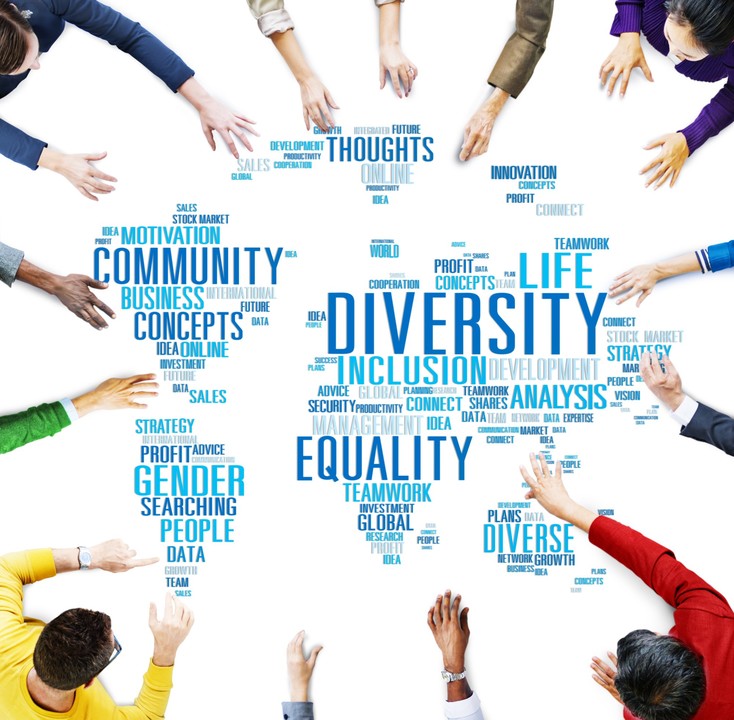
Diversity Creates Success
Why is it important to create diverse teams? As the Vulcan’s say, “Infinite diversity in infinite combinations.”
The #workforce is changing – rapidly. Fifty years ago, offices were fairly homogenous and roles were often clearly established based on gender and race; watch early seasons of Mad Men, or the movie 9-5 and you’ll get the picture. Although there we’re exceptions, it was pretty much a given that in order to truly succeed and grow in the workplace, you needed to be white and male…or a tough as nails women!
“This is the last straw! Look, I've got a gun out there in my purse. Up until now I've been forgivin' and forgettin' because of the way I was brought up, but I'll tell you one thing. If you ever say another word about me or make another indecent proposal, I'm gonna get that gun of mine, and I'm gonna change you from a rooster to a hen with one shot!” –Dolly Parton (Doralee)
Though in many ways this homogenous #strategy is still the case, in many ways, this paradigm is also changing. The strategy may have worked for long term success once upon a time – not anymore. Now more than ever, with increasing demographic shifts and globalization, embracing #diversity is an imperative to achieving success and long term sustainability. The face of the population is changing. The workforce is coming to reflect that - just ask most Millennials.
So why is workplace diversity often such a challenge?
It would seem as though nowadays most people in the workplace understand that presenting a diverse (yet strategically aligned) set of ideas, services and solutions is beneficial. Presenting #customers (or constituents) with a homogenous view of a dozen middle-aged white guys isn’t necessarily a good thing. In most cases your customers themselves are made of diverse groups of individuals. You should be presenting them with a diverse set of ideas and solutions reflecting such.
Workplace diversity doesn’t just refer to gender and race anymore either. As the VP of Supplier Diversity at a global Fortune 500 company told me, “…our database of vendors and suppliers, like our workforce, is so diverse that we ran out of boxes on our supplier registration form. We’ve recently switched to a new online portal that allows for multiple combinations of self-identification. ” Businesses must account for diversity in race, gender, sexual orientation, ethnicity, age, culture and various combinations of all of the above. Generational diversity has also become equally important; with aging baby boomers and incoming #Millennials. The opportunities for embracing diversity are greater than ever.
Having a diverse team can lead to growth as an organization in many ways.
- A diverse workforce and supplier relationships represents the diverse population that is your customer base. Having a diverse team can help raise awareness and increase communication regarding the different ways different people think and respond, thus not only helping enhance team performance, but also helping you to shape your strategy, #communication, and products and services for a diverse group of customers - more options to go to market. For example, a middle-aged man with lots of industry knowledge and experience might still have trouble identifying with the way an African American teenage girl makes purchasing decisions. A 20-something, or a 20-something African American woman, might have an easier time targeting the needs of that particular client base as they can better relate. Working together, the two could put together a strategy and solution that works best for both the company and the customer.
- A diverse team – that has built trust and respect - has a wealth of creative ideas and strategies to choose from that a homogenous team might not have. Knowing your peers and your client base is only one step to figuring out the best strategy. Sharing those creative ideas and experiences and applying them in support of the company success is equally as important.
- Communication is a necessity. No two people have the same history and experience. Everyone brings something different to the table. Diverse teams have a great opportunity to learn from each other. For a diverse team to truly be high performing, they must feel comfortable having open and honest communication of ideas. Open and honest communication can increase trust and help teams learn, grow and be more successful.
- There are some basic economic facts that make fostering team diversity appealing as well. Companies that foster diversity tend to see lower turnover rates, and are able to avoid some basic litigation. So while it’s true that companies should seek to encourage diversity because it is good corporate citizenship, there are certainly some simple financial incentives as well. Creating high performing diverse teams, embracing a diverse workforce, and working with diverse suppliers, is ultimately good for the organization’s bottom line and long-term growth.
So yes, the idea of encouraging and embracing diversity in the workforce is extremely important. In the end, companies that are able to adapt to changing demographics, and embrace diversity of the individual and diversity of thought, are likely the companies that will thrive in this ever-changing competitive world of business.
About Scott Span, MSOD: is CEO & Lead Consultant of Tolero Solutions – a Leadership Effectiveness & Strategy firm. He helps clients in achieving success through people, creating organizations where people enjoy working and customers enjoy doing business.
Email | Website | LinkedIn | Twitter | Blog | Facebook
______________________________________________________________
*All Rights Reserved. Reproduction, publication, and all other use of any and all of this content is prohibited without authorized consent of Tolero Solutions and the author.
Resume Writing & Career Counseling | Business & HR Consulting Services | Recruitment & Talent Acquisition Services
7yI could not have said it better myself! Nice post Scott Span.